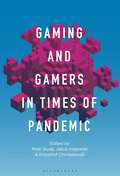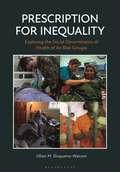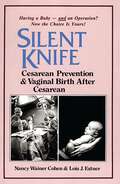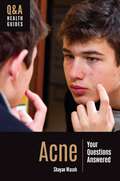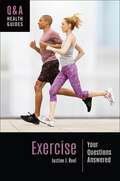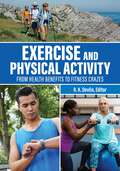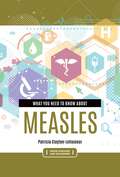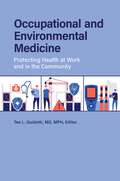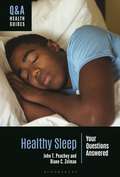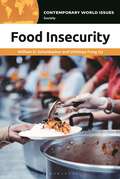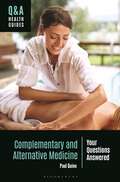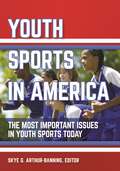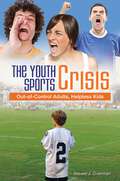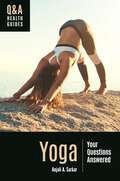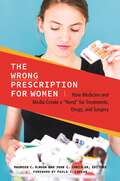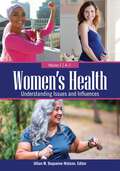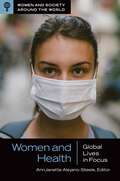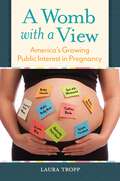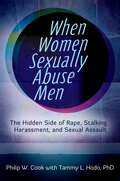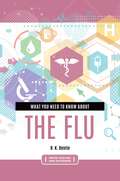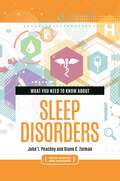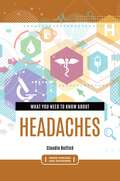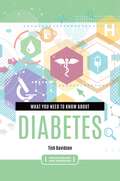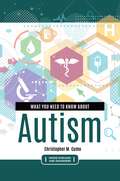- Table View
- List View
Gaming and Gamers in Times of Pandemic
This edited collection brings in multiple scholarly perspectives to examine the impact of the pandemic and resulting government policies, especially lockdowns, on one particular cultural sphere: games.The COVID-19 pandemic has impacted virtually every aspect of our lives, regardless of where we live. In the initial months, many industry reports noted the unexpected positive impact on online digital game sales. Games were not just lockdown-proof, but boosted by lockdowns. Stay-at-home orders triggered a rush toward games as an alternative form of entertainment, and the ubiquity of mobile phones allowed wider than ever participation. Gaming and Gamers in Times of Pandemic studies how the COVID-19 pandemic affected game players, game developers, game journalists and game scholars alike in many other ways, starting with the most direct – illness, and sometimes death. Some effects are temporary, others are here to stay.
Gaming and Gamers in Times of Pandemic
by Piotr SiudaThis edited collection brings in multiple scholarly perspectives to examine the impact of the pandemic and resulting government policies, especially lockdowns, on one particular cultural sphere: games.The COVID-19 pandemic has impacted virtually every aspect of our lives, regardless of where we live. In the initial months, many industry reports noted the unexpected positive impact on online digital game sales. Games were not just lockdown-proof, but boosted by lockdowns. Stay-at-home orders triggered a rush toward games as an alternative form of entertainment, and the ubiquity of mobile phones allowed wider than ever participation. Gaming and Gamers in Times of Pandemic studies how the COVID-19 pandemic affected game players, game developers, game journalists and game scholars alike in many other ways, starting with the most direct – illness, and sometimes death. Some effects are temporary, others are here to stay.
Prescription for Inequality: Exploring the Social Determinants of Health of At-Risk Groups
by Jillian M. Duquaine-WatsonThis book explores how social determinants of health (SDH) impact the health of a variety of marginalized demographic groups in the United States. Chapters focus on the 13 groups that research demonstrates are most disadvantaged by SDH and, consequently, who suffer the most from ongoing health disparities in America. This includes Black and Hispanic individuals, the LGBTQIA+ community, women, the elderly, people with disabilities, veterans, and those living in rural areas, among others.Chapters follow a standardized format that makes it easy for readers to focus in on aspects of the subject that are of greatest interest. Each profile begins with a snapshot of that group's current state of health, including the biggest medical concerns and how other determinants of health may play a role. Next, each chapter takes an in-depth look at the four components of SDH: economic factors, educational access and quality, healthcare access and quality, and living environment and social context. Unique problems and possible solutions are explored within each of these four sections. An end-of-volume bibliography and further readings list points readers who wish to continue their investigation of the topic toward additional information.Relying on an interdisciplinary framework, the book incorporates research from diverse fields including public health, feminist theory, critical studies of race and ethnicity, poverty studies, disability studies, aging studies, cultural competence, legal studies, and global health. In recognition of the reality that health disparities are the result of a complex interplay of forces and structural factors that permeate American culture, analysis extends beyond health and health care to include a broad range of interrelated social, political, economic, and educational components.
Silent Knife: Cesarean Prevention and Vaginal Birth after Cesarean (VBAC)
by Lois J. Estner Nancy Wainer CohenThe bible of cesarean prevention. Wall Street Journal A landmark event, which will change the course of obstetric care by giving parents the informtion they need to make the decisions that are best for their own families. Comprehensive, highly readable, sensitive . . . should be read by everyone who cares about someone. Marian Tompson Director, Alternative Birth Crisis Coalition American Academy of Medicine Required reading for all childbirth professionals and prospective parents. Journal of Gynecological Nursing
Acne: Your Questions Answered (Q&A Health Guides)
by Shayan WasehThis book addresses readers' most pressing questions and concerns about acne, including its causes, effects on the skin, and impact on self-esteem. It provides guidance and resources for anyone struggling with acne, including information about when to see a dermatologist.Pimples. Blemishes. Spots. Zits. Whatever you call it, acne is something that almost everyone will have to deal with at least once in their life. But what exactly is acne, and how do the various types of it differ? What role do hormones, diet, and other lifestyle factors play in causing it? How can it be prevented and effectively treated at home, and when is it a good idea to see a health-care professional? How can we stop acne from taking a toll on our skin and our self-confidence?Books in Greenwood&’s Q&A Health Guides series follow a reader-friendly question-and-answer format that anticipates readerS&Rsquo; needs and concerns. Prevalent myths and misconceptions are identified and dispelled, and a collection of case studies illustrates key concepts and issues through relatable stories and insightful recommendations. Each book also includes a section on health literacy, equipping teens and young adults with practical tools and strategies for finding, evaluating, and using credible sources of health information both on and off the internet—important skills that contribute to a lifetime of healthy decision-making.
Exercise: Your Questions Answered (Q&A Health Guides)
by Justine J. ReelThis book answers readers' most pressing questions about exercise and physical activity and will serve as a valuable resource to anyone interested in starting and maintaining healthy habits in this important area of health.Whether it's going for a run or to a yoga class, playing basketball with friends, or spending an afternoon doing yardwork, moving our bodies regularly is vital for both our physical and mental well-being. This book explores the different forms of exercise and physical activity, their benefits and risks, why so many people find it difficult to be physically active, and how to create and maintain a healthy, sustainable plan for physical activity.Books in Greenwood's Q&A Health Guides series follow a reader-friendly question-and-answer format that anticipates readers' needs and concerns. Prevalent myths and misconceptions are identified and dispelled, and a collection of case studies illustrates key concepts and issues through relatable stories and insightful recommendations. Each book also includes a section on health literacy, equipping teens and young adults with practical tools and strategies for finding, evaluating, and using credible sources of health information both on and off the internet—important skills that contribute to a lifetime of healthy decision-making.
Exercise and Physical Activity: From Health Benefits to Fitness Crazes
by R. K. DevlinThis encyclopedia explores exercise and physical activity from a variety of angles, including anatomy and exercise science, health benefits and risks, the wide array of sports and recreational activities available, and the sociocultural context of physical fitness.Exercise and Physical Activity: From Health Benefits to Fitness Crazes is a one-volume encyclopedia featuring more than 200 entries that cover a multitude of exercise-related topics. Content is divided across five broad themes: anatomy, exercise science, sports and activities, health benefits and risks, and exercise and society.The anatomy theme includes entries on all the major skeletal muscle groups and associated connective tissues. Within the exercise science theme, entries focus on topics within the fields of physiology, kinesiology, and sports psychology. Profiles of more than 70 sports and recreational activities are included. Entries under the theme of health benefits and risks explore the effects of exercise on many of the body's physiological processes and related systems, as well as specific sports-related injuries. Exercise and society entries profile influential individuals and organizations, as well as fitness trends. Together, these themes support a holistic understanding of exercise, encompassing both the theoretical and the practical.
What You Need to Know about Measles (Inside Diseases and Disorders)
by Patricia Clayton-LeVasseurAlthough measles is a preventable disease, today cases are on the rise in the United States because of falling vaccination rates. This book provides a broad introduction to this once widespread and still potentially very dangerous viral infection.Measles is a highly contagious viral infection that can cause serious, even life-threatening, complications. Although the MMR vaccine is effective at preventing measles, the rise of anti-vaccination sentiment in the United States has many experts concerned that measles may once again become a significant public health threat.What You Need to Know about Measles is part of Greenwood's Inside Diseases and Disorders series. This series profiles a variety of physical and psychological conditions, distilling and consolidating vast collections of scientific knowledge into concise, readable volumes. A list of "top 10" essential questions begins each book, providing quick-access answers to readers' most pressing concerns. The text follows a standardized, easy-to-navigate structure, with each chapter exploring a particular facet of the topic. In addition to covering such basics as causes, signs and symptoms, diagnosis, and treatment options, books in this series delve into issues that are less commonly addressed but still critically important, such as effects on loved ones and caregivers. Case illustrations highlight key themes discussed in the book and are accompanied by insightful analyses and recommendations.
Occupational and Environmental Medicine: Protecting Health at Work and in the Community
by Tee L. GuidottiProviding a concise introduction to the field of occupational and environmental medicine, this book delves into what it does, how it protects workers, how it benefits employers, and how it is developing as an important field in health protection.This book shines a light on an important but little-appreciated corner of medicine where health, technology, the environment, and the economy come together to have a real impact on people and society. The text serves as one of the few entry points into the world of occupational and environmental health protection for readers interested in learning more about it and what it can do for them.Readers will be introduced to such topics as the history of occupational and environmental medicine (OEM), schools of thought associated with OEM, the relationship of OEM to neighboring fields of study, and profiles of OEM practitioners. This guide emphasizes the rich potential for environmental medicine to contribute to sustainability, public health, and community health protection, making it an essential resource for anyone interested or involved in these sectors.
Healthy Sleep: Your Questions Answered (Q&A Health Guides)
by John T. Peachey Diane C. ZelmanWe all know how important sleep is, but many of us struggle to consistently get enough high-quality rest. This book answers readers' sleep-related questions and offers guidance for a better night's slumber.Part of Bloomsbury's Q&A Health Guides series, this book aims to educate teens and young adults about the importance of sleep through an engaging question-and-answer format. The book's 44 questions cover the basics of sleep and dreaming, the connection between sleep and health, sleep problems and disorders, and how to improve sleep:- Why exactly is sleep so important?- How does not getting enough impact physical wellbeing, academic performance, and interactions with others?- How do you know if you have a sleep disorder?- Can caffeine and power naps really make up for poor sleep habits?The text strikes a balance between theory and practice, offering both clear explanations of foundational concepts in sleep science and useful suggestions that readers can implement in their own lives.Augmenting the main text, a collection of 5 case studies illustrate key concepts and issues through relatable stories and insightful recommendations. The "Common Misconceptions" section at the beginning of the volume dispels 5 long-standing myths about sleep, directing readers to additional information in the text. The glossary defines terms that may be unfamiliar to readers, while a directory of resources curates a list of the most useful sleep-related books, websites, and other materials. Finally, whether they're looking for more information about sleep or any other health-related topic, readers can turn to the "Guide to Health Literacy" section for practical tools and strategies for finding, evaluating, and using credible sources of health information both on and off the Internet.
Food Insecurity: A Reference Handbook (Contemporary World Issues)
by William D. Schanbacher Whitney Fung UyThis comprehensive and authoritative one-stop resource examines the issue of food insecurity in the United States, including the various economic, social, political, and cultural factors that drive the problem.Social welfare agencies, schools, food banks, and other organizations have all put forth efforts to combat food insecurity, but it remains a serious risk for millions of poor Americans today. Food Insecurity: A Reference Handbook examines the reasons why food insecurity remains such a longstanding problem in American society.Beginning with a history of food insecurity from the country's origins to the present day, the book also delves into the problems and controversies related to food insecurity, such as urban food deserts, substance abuse impacts, nutrition education, and income inequality. One of the most valuable aspects of the book is that it surveys the history of food insecurity in a manner that helps the reader identify key issues in an easy-to-understand fashion. The book's Perspectives chapter presents a broad range of voices on various facets of food insecurity, providing crucial, diverse perspectives to round out the coverage and expertise of the authors.
Complementary and Alternative Medicine: Your Questions Answered (Q&A Health Guides)
by Paul QuinnExplore the many forms of complementary and alternative medicine (CAM) practiced today and discover their histories, guiding principles, purported benefits, and potential risks. Part of Bloomsbury's Q&A Health Guides series, this book examines a wide variety of forms of CAM popular in the 21st century. The volume's 48 questions begin with 10 that address foundational topics such as who uses CAM, how CAM has been studied and regulated, and how to gauge a particular treatment's safety and efficacy for yourself. The remaining 38 questions cover alternative medical systems and complementary treatments, including mind-body interventions, biologically based therapies, manipulation- and body-based methods, and energy therapies. Each answer utilizes a standardized format that examines a treatment's history, how it's practiced, the scientific community's view, potential benefits and risks, and special considerations. The text takes an unbiased approach, balancing respect for individuals' beliefs with the rigor of modern science.Augmenting the main text, a collection of 5 case studies illustrate key concepts and issues through relatable stories and insightful recommendations. The Common Misconceptions section at the beginning of the volume dispels 5 long-standing myths about CAM, directing readers to additional information in the text. The Glossary defines terms that may be unfamiliar to readers, while the Directory of Resources curates a list of the most useful books, websites, and other materials. Finally, whether they're looking for more information about this subject or any other health-related topic, readers can turn to the Guide to Health Literacy section for practical tools and strategies for finding, evaluating, and using credible sources of health information both on and off the Internet.
Youth Sports in America: The Most Important Issues in Youth Sports Today
by Skye G. Arthur-BanningWritten by a former Olympic consultant, this book examines youth sports in America today, from institutions that dominate organized youth sports to high-profile controversies ranging from burnout and out-of-control parents to the health risks of youth football.As organized youth sports occupy an ever-greater role in the lives of American families, critics have begun to question whether some programs and participants have lost their way. This timely book examines the state of youth sports in America today, analyzing how organized sports influence communities, discussing the potential emotional and physical benefits as well as drawbacks of youth sports, and profiling the industry's key participants, ranging from parent coaches to club sports owners to personal trainers.The work begins with a look at the evolution of youth sports in the United States, then explores such topics as burnout, self-discipline, performance-enhancing drugs, parental violence, and scholarships. The content includes coverage of 20 individual youth sports, such as basketball, softball, lacrosse, baseball, volleyball, football, soccer, cross-country, and swimming, and provides breakdowns of historical and current participation rates, injury rates, and sport-specific scholarship trends. Each summary includes contact information on important organizations specific to that sport.
The Youth Sports Crisis: Out-of-Control Adults, Helpless Kids
by Steven J. OvermanThis provocative critique of the youth sports movement examines the various issues surrounding children in sports and provides a plan for reform based on a change in philosophy and practice.Many American children spend more than 20 hours a week in organized sports, forgoing free time and unstructured recreational activities for the rigors of training and competition. This book offers a comprehensive critique of the youth sports movement, pitting the reality of adult-run sports programs against the needs and interests of children. It examines whether the tradeoff of "normal play time" for structured sports activities teaches discipline and leads to stronger character development, or if the pressures of the game, the physical strain of practicing, and the general overscheduling of children's lives have eroded the benefits associated with playing sports.Educator and former coach Steven J. Overman contends that youth-based sports programs require a radical change for the well-being of the young participants. The book explores the various problems in organized sports, including stress on the family, physical health hazards, violence, emotional duress, elitism, and hyper-competitiveness. Incorporating the perspectives of coaches, athletes, parents, physicians, and social scientists, the narrative scrutinizes the role of adults as promoters and coaches and concludes with a discussion of current and needed reforms.
Yoga: Your Questions Answered (Q&A Health Guides)
by Anjali A. SarkarAn ideal resource for teens and young adults interested in incorporating a yoga practice into their lives, this book answers readers' questions about the origins, benefits, and potential risks of yoga and offers practical advice for getting started.First developed in northern India more than 5,000 years ago, yoga is now practiced around the world. It can improve strength, flexibility, and body awareness, as well as reduce stress and anxiety. As with any form of exercise, however, it can lead to injury if done incorrectly. For anyone interested in trying yoga for the first time, it's important to find a style and qualified instructor that are a good fit for their individual needs and goals.Part of Greenwood&’s Q&A Health Guides series, Yoga: Your Questions Answered follows a reader-friendly question-and-answer format that anticipates readerS&Rsquo; needs and concerns. Prevalent myths and misconceptions are identified and dispelled, and a collection of case studies illustrates key concepts and issues through relatable stories and insightful recommendations. Each book in the series also includes a section on health literacy, equipping teens and young adults with practical tools and strategies for finding, evaluating, and using credible sources of health information both on and off the internet—important skills that contribute to a lifetime of healthy decision-making.
The Wrong Prescription for Women: How Medicine and Media Create a "Need" for Treatments, Drugs, and Surgery (Women's Psychology)
by Maureen C. McHugh and Joan C. Chrisler, EditorsThis groundbreaking book challenges the medicalized approach to women's experiences including menstruation, pregnancy, and menopause and suggests that there are better ways for women to cope with real issues they may face.Before any woman diets, douches, botoxes, reduces, reconstructs, or fills a prescription for antidepressants, statins, hormones, menstrual suppressants, or diet pills, she should read this book. Contesting common medical practice, the book addresses the many aspects of women's lives that have been targeted as "deficient" in order to support the billion-dollar profits of the medical-pharmacological industry and suggests alternatives to these "remedies."The contributors—psychologists, sociologists, and health experts—are also gender experts and feminist scholars who recognize the ways in which gender is an important aspect of the human experience. In this eye-opening work, they challenge the marketing and "science" that increasingly render women's bodies and experiences as a series of symptoms, diseases, and dysfunctions that require treatment by medical professionals who prescribe pharmaceutical and surgical interventions. Each article in the book addresses the marketing of a specific "condition" that has been constructed in a way that convinces a woman that her body is inadequate or her experience and behavior are not good enough. Among the topics addressed are menstruation, menopause, pregnancy, post-partum adjustment, sexual desire, weight, body dissatisfaction, moodiness, depression, grief, and anxiety.
Women's Health [2 volumes] [2 volumes]: [2 volumes]
by Jillian M. Duquaine-WatsonThis interdisciplinary project provides an informative, accessible, and comprehensive introduction to women's health. Emphasizing the perspectives of diverse groups of women, it addresses various biological, economic, social, environmental, and political factors that influence women's health and well-being.Women are more likely than men to experience mood disorders, certain types of cancer, Alzheimer's disease, stroke, arthritis, lupus, and celiac disease. In addition, women face significantly more barriers to health care than men due to a variety of social, economic, political, and environmental factors, including inequality, poverty, legislation, and pollution. Despite this, the field of women's and girls' health remains both understudied and underfunded.Women's Health: Understanding Issues and Influences explores important topics in the field of women's health in the early 21st century, offering readers a comprehensive and informative yet accessible introduction to women's health in the United States. While some topics are unique to women's health, others illustrate how women's health and women's experiences within the U.S. health care system are different from men's, as well as how certain health issues impact women differently than men. Entries have been crafted by a diverse team of contributors with wide-ranging expertise, and each entry features a collection of further readings and cross references to other relevant entries.
Women and Health: Global Lives in Focus (Women and Society around the World)
by AnnJanette Alejano-SteeleThis volume on global women's health provides a broad overview of many conditions that impact women's health, including social and economic inequities and examples of health advocacy.The health and wellbeing of the world's population matters, but many of the female half experience unequal access to information and care that increases their health risks. This global women's health volume delves into a number of health and social factors that combine to create a lower quality of life for women. Each chapter represents a global region, featuring three to four countries, and reviews health goals and outcomes relative to the United Nations Sustainable Development Goals and World Health Organization discussions on social determinants of health. Chapters are organized to invite readers to consider environmental conditions and social determinants that create gender inequities in health around the globe. Cultural forces that impact health, including environmental risks; access to health care; reproductive health; infectious and noncommunicable diseases; behavioral/mental health; and intersectional identity considerations such as religion, ethnicity, and LGBTQ identity issues.
A Womb with a View: America's Growing Public Interest in Pregnancy
by Laura TroppThrough history, interviews, anecdotes, and popular culture, this book examines pregnancy from all angles, covering changing expectations for pregnancy; new definitions of when fatherhood begins; the implications of new, earlier connections to the fetus; and the political, economic, and social consequences to the public.In the 21st century, pregnancy is more than a biological event—it's a cultural phenomenon. A Womb with a View: America's Growing Public Interest in Pregnancy addresses how media influence and changes in society have exposed and commoditized pregnancy like never before, while technology has enabled us to share, record, and preserve all aspects of the pregnancy experience.Each chapter of the book focuses on an aspect of the pregnancy experience, including efforts to peer in and bond with the fetus, the various ways of obtaining advice, the evolving role of expectant fathers, how pregnancy is depicted and treated in popular culture, and branding and marketing to pregnant couples. Interviews with those marketing products and services to pregnant women reveal how pregnancy is now "big business," while real-life stories from pregnant women and images from television and film serve to illustrate our culture's fascination with pregnancy.
When Women Sexually Abuse Men: The Hidden Side of Rape, Stalking, Harassment, and Sexual Assault
by Philip W. Cook Tammy L. HodoRevealing the shocking and detailed accounts of how adult women stalk, sexually assault, and even rape adult men, this book portrays an eye-opening reality: women can act as aggressive predators and victimize men.Crimes of a sexual nature perpetrated by adult females against males constitute a serious problem in our society. A woman can rape a man, and this crime occurs far more often than most imagine. This book addresses an entire range of crimes beyond rape, however; stalking, sexual harassment, and sexual assault are all covered in detail.When Women Sexually Abuse Men: The Hidden Side of Rape, Stalking, Harassment, and Sexual Assault illuminates the long-overlooked subject of adult female against adult male sex crimes. Combining personal accounts, information on criminal cases, relevant research on adult female against adult male sexual offenses, and statistical data from the FBI and other government sources, the authors comprehensively document how some women can be aggressive sexual predators, just like their male counterparts; highlight the changes in the criminal behavior of women; and provide fascinating stories of true crime as well as shocking revelations about human behavior.
What You Need to Know about the Flu (Inside Diseases and Disorders)
by R. K. DevlinWhat You Need to Know About the Flu offers readers a concise yet in-depth look at the influenza virus and the illness it causes, with both a historical perspective and a contemporary discussion of treatment, prevention, and controversies.Seasonal influenza strikes each winter, sickening millions, causing thousands of hospitalizations and deaths, and resulting in millions of dollars in health care costs and lost work productivity. The flu can also cause periodic epidemics and global pandemics. Experts fear the next public health emergency may be a new and deadly strain of influenza.This book is a part of Greenwood's Inside Diseases and Disorders series. This series profiles a variety of physical and psychological conditions, distilling and consolidating vast collections of scientific knowledge into concise, readable volumes. A list of "top 10" essential questions begins each book, providing quick-access answers to readers' most pressing concerns. The text follows a standardized, easy-to-navigate structure, with each chapter exploring a particular facet of the topic. In addition to covering basics such as causes, signs and symptoms, diagnosis, and management options, books in this series delve into issues that are less commonly addressed but still critically important, such as effects on loved ones and caregivers. Case illustrations highlight key themes discussed in the book, accompanied by insightful analyses and recommendations.
What You Need to Know about Sleep Disorders (Inside Diseases and Disorders)
by John T. Peachey Diane C. ZelmanThis book provides readers with the information they need to know about sleep disorders: the process and purpose of sleep, the importance of good sleep hygiene, and the impact of modern life on our quality of sleep.Good sleep is essential for optimal health, yet a number of sleep disorders can interfere with consistent, restful sleep. From insomnia to sleep apnea and from narcolepsy to restless legs syndrome, these conditions can have an enormous impact on both the quantity and quality of an individual's sleep.What You Need to Know about Sleep Disorders is part of Greenwood's Inside Diseases and Disorders series. This series profiles a variety of physical and psychological conditions, distilling and consolidating vast collections of scientific knowledge into concise, readable volumes. A list of "Top 10" essential questions begins each book, providing quick-access answers to readers' most pressing concerns. The text follows a standardized, easily navigable structure, with each chapter exploring a particular facet of the topic. In addition to covering such basics as causes, signs and symptoms, diagnosis, and treatment options, books in this series delve into issues that are less commonly addressed but still critically important, such as effects on loved ones and caregivers. Case illustrations highlight key themes discussed in the book and are accompanied by insightful analyses and recommendations.
What You Need to Know about Headaches (Inside Diseases and Disorders)
by Claudio ButticèThere are numerous types of headaches, each with a unique cause, pain profile, and set of treatment options. This book offers readers a broad introduction to this common, yet often misunderstood, group of conditions.What exactly is going on in your body during a headache? How can they be prevented or managed? How can you tell if your splitting headache is actually a brain tumor? This book provides the answers to these and many other questions.What You Need to Know about Headaches is the latest volume in Greenwood's Inside Diseases and Disorders series. This series profiles a variety of physical and psychological conditions, distilling and consolidating vast collections of scientific knowledge into concise, readable volumes. A list of "top 10" essential questions begins each book, providing quick-access answers to readers' most pressing concerns. The text follows a standardized, easy-to-navigate structure, with each chapter exploring a particular facet of the topic. In addition to covering such basics as causes, signs and symptoms, diagnosis, and treatment options, books in this series delve into issues that are less commonly addressed but still critically important, such as effects on loved ones and caregivers. Case illustrations highlight key themes discussed in the book and are accompanied by insightful analyses and recommendations.
What You Need to Know about Diabetes (Inside Diseases and Disorders)
by Tish DavidsonThis accessibly written book provides a broad introduction to diabetes—its signs, symptoms, and effects on the body; how it can be managed and prevented; and the issues and controversies that surround this all-too-common condition.Today, nearly one in 10 Americans has diabetes, and complications from diabetes are now the seventh leading cause of death in the United States. Rates of type 2 diabetes are on the rise, despite the fact that it's considered a highly preventable condition.What You Need to Know about Diabetes is a part of Greenwood's Inside Diseases and Disorders series. This series profiles a variety of physical and psychological conditions, distilling and consolidating vast collections of scientific knowledge into concise, readable volumes. A list of "top 10" essential questions begins each book, providing quick-access answers to readers' most pressing concerns. The text follows a standardized, easy-to-navigate structure, with each chapter exploring a particular facet of the topic. In addition to covering basics such as causes, signs and symptoms, diagnosis, and management options, books in this series delve into issues that are less commonly addressed but still critically important, such as effects on loved ones and caregivers. Case illustrations highlight key themes discussed in the book and are accompanied by insightful analyses and recommendations.
What You Need to Know about Autism (Inside Diseases and Disorders)
by Christopher CumoThis book offers an accessibly written introduction to autism that make it an indispensable resource for anyone whose life has been affected—directly or indirectly—by this condition.Autism is a spectrum of developmental disorders that can range from mild to severe. Individuals with autism often have difficulties with communication, social interaction, and sensory processing, and may engage in repetitive or restricted behaviors. Beyond this definition, however, what finer points and real-life implications of these disorders do individuals and families affected by autism need to know?What You Need to Know about Autism is a part of Greenwood's Inside Diseases and Disorders series. This series profiles a variety of physical and psychological conditions, distilling and consolidating vast collections of scientific knowledge into concise, readable volumes. A list of "Top 10" essential questions begins each book, providing quick-access answers to readers' most pressing concerns. The text follows a standardized,easily navigable structure, with each chapter exploring a particular facet of the topic. In addition to covering basics such as causes, signs and symptoms, diagnosis, and treatment options, books in this series delve into issues that are less commonly addressed but still critical to understand, such as effects on loved ones and caregivers. Case illustrations highlight key themes discussed in the book and are accompanied by insightful analyses and recommendations.
